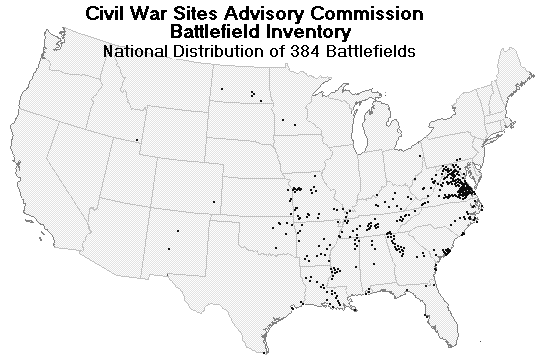
THE
BATTLEGROUNDS

Fort Sumter
On April 10, 1861, Brig. Gen. Beauregard, in command of the provisional Confederate forces at Charleston, South Carolina, demanded the surrender of the Union garrison of Fort Sumter in Charleston Harbor. Garrison commander Anderson refused. On April 12, Confederate batteries opened fire on the fort, which was unable to reply effectively. At 2:30 pm, April 13, Major Anderson surrendered Fort Sumter, evacuating the garrison on the following day. The bombardment of Fort Sumter was the opening engagement of the American Civil War. Although there were no casualties during the bombardment, one Union artillerist was killed and three wounded (one mortally) when a cannon exploded prematurely while firing a salute during the evacuation on April 14.
First Bull Run
This was the first major land battle of the armies in Virginia. On July 16, 1861, the untried Union army under Brig. Gen. Irvin McDowell marched from Washington against the Confederate army, which was drawn up behind Bull Run beyond Centreville. On the 21st, McDowell crossed at Sudley Ford and attacked the Confederate left flank on Matthews Hill. Fighting raged throughout the day as Confederate forces were driven back to Henry Hill. Late in the afternoon, Confederate reinforcements (one brigade arriving by rail from the Shenandoah Valley) extended and broke the Union right flank. The Federal retreat rapidly deteriorated into a rout. Although victorious, Confederate forces were too disorganized to pursue. Confederate Gen. Bee and Col. Bartow were killed. Thomas J. Jackson earned the nom de guerre "Stonewall." By July 22, the shattered Union army reached the safety of Washington. This battle convinced the Lincoln administration that the war would be a long and costly affair. McDowell was relieved of command of the Union army and replaced by Maj. Gen. George B. McClellan, who set about reorganizing and training the troops.
Antietam
On September 16, 1862 Maj. Gen. George B. McClellan confronted Lee’s Army of Northern Virginia at Sharpsburg, Maryland. At dawn September 17, Hooker’s corps mounted a powerful assault on Lee’s left flank that began the single bloodiest day in American military history. Attacks and counterattacks swept across Miller’s cornfield and fighting swirled around the Dunker Church. Union assaults against the Sunken Road eventually pierced the Confederate center, but the Federal advantage was not followed up. Late in the day, Burnside’s corps finally got into action, crossing the stone bridge over Antietam Creek and rolling up the Confederate right. At a crucial moment, A.P. Hill’s division arrived from Harpers Ferry and counterattacked, driving back Burnside and saving the day. Although outnumbered two-to-one, Lee committed his entire force, while McClellan sent in less than three-quarters of his army, enabling Lee to fight the Federals to a standstill. During the night, both armies consolidated their lines. In spite of crippling casualties, Lee continued to skirmish with McClellan throughout the 18th, while removing his wounded south of the river. McClellan did not renew the assaults. After dark, Lee ordered the battered Army of Northern Virginia to withdraw across the Potomac into the Shenandoah Valley.